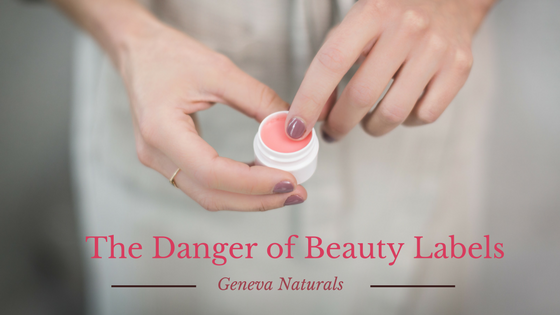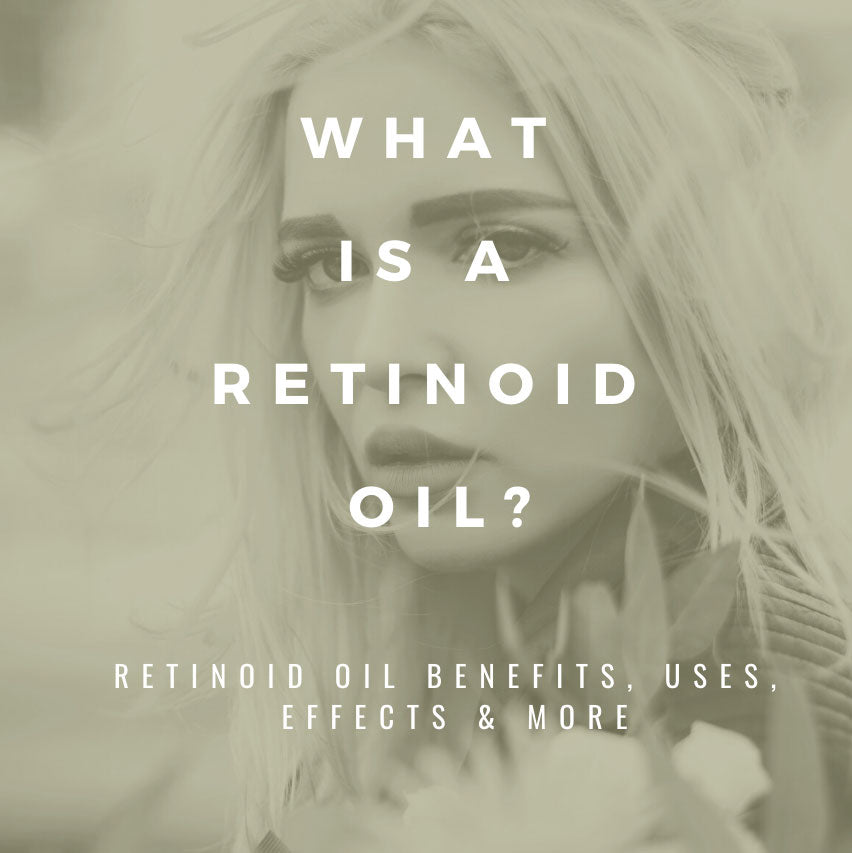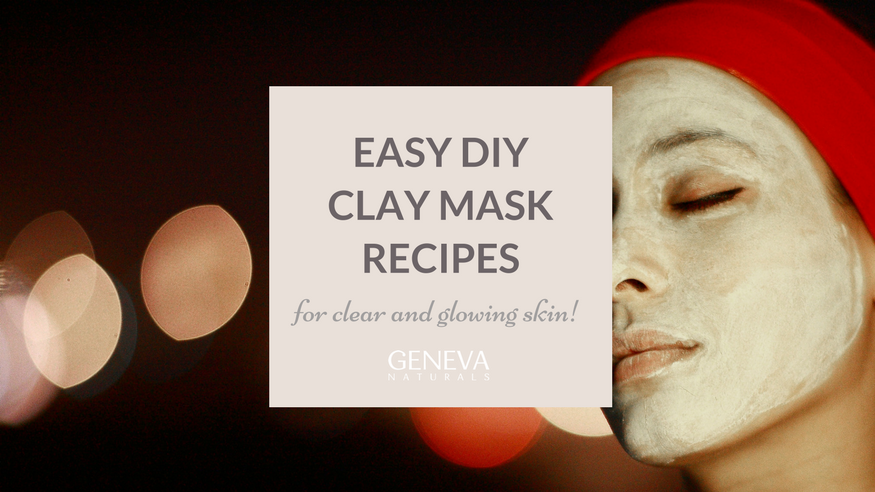Dangers of Beauty Labels


You might not give much thought to the labels on your skin care products, but beauty manufacturers and distributors know there are many factors that go into designing a label. Aside from the colors, branding, design and shelf placement, the FDA (Food and Drug Administration) follows a very strict set of standards outlined on their web-site to help protect consumers from potentially hazardous, unsafe materials or misleading labels.

Skin Care Labeling Requirements
Some of the FDA cosmetic labeling requirements include:
- Language
- Type Size
- Name and Place of Business
- Quantity of Contents
- Ingredients Labeling
- Color Additives
- Incidental Ingredients
- Similar Product Assortments
- Fragrances and Flavors
- Warning Statements
- Type Size
- Quantity of Contents Declaration
- Legal Definition of Terms
- Placement of Information
So, throwing some ingredients together and slapping a label on something does not make a sellable skin care product. Time, money, resources; all of these factors go into making a successful skin care company. Some have been trying for years to be noticed.
Whether the product is manufactured or just sold in the US is irrelevant to the FDA. They require all imported products to meet the requirements of the FD&C Act (Federal Food, Drug and Cosmetic Act) and the FP&L Act (Fair Packaging and Labeling Act).
In order for a product to be considered misbranded, it must meet one of the following requirements:
According to the FDC&A, all cosmetic products (with the exception of soap) that are intended to be applied to an individual’s human body for the purpose of promoting attractiveness (such as body shape, gender, appearance, cleansing or beautifying) must meet the standard.
The bottom line is that we should be able to go into a store and choose a product that we know is safe. We should also be able to read the labels and understand what is in a product, but in order to do that, we must first identify the common catch phrases used by the skin care companies and beauty industry leaders to distinguish different products from one another.
Still confused? Before we go on, watch this video made by the Food and Drug Administration themselves about how they monitor cosmetics in the US.
Label Categories
There are 4 different categories of phrases used in the industry.
Category A
Unfortunately, there is currently no regulation regarding these identifiers. They can be extremely confusing to consumers who are doing their due diligence to choose a product that is right for them. But until the FDA creates a standard for these labels and begins to enforce them, it’s really a guessing game as to how accurately they describe what you are purchasing.
- Organic
- 100% Natural
- All Natural Ingredients
- Vegan
- Paraben Free
- Contains Organic Ingredients
- Non-Toxic
- Eco Friendly
- Does Not Contain "XYZ"
- Cruelty Free
- Not Tested on Animals
Category B
These labels identify whether or not the product is safe for the environment. For someone who is conscious of their purchases in relation to its impact on the environment, these are labels you want to watch for. Unfortunately, there is no definition for products that are considered “earth friendly”. So while a product might be labeled as such, unless there is a 3rd party endorsement that has properly researched its claims, it very well could be fabricated.
- Earth Friendly
- Green
- Sustainable
- Wild Harvested or Sourced Ingredients
- Environmentally Safe
- Environmentally Sound Harvested Ingredients
Category C
Labels in this category describe how the product will affect you and potential sensitivities. But because everyone has different allergies or products they are sensitive to, these labels aren’t really helpful either. But if you know you have sensitive skin or are prone to breakouts when introducing a new product to your skin care regimen, doing a sample test is a good idea. To do this, apply the product to a small area on your skin. If redness or irritation occurs, discontinue using the product and try something else when the irritation clears up.
- Dermatologist Tested
- Non-Irritating
- Hypoallergenic
- Safe for you
- Non-Comedogenic
Category D
While these labels may be the most effective in identifying whether or not a product is safe in relation to government regulations and standards, you probably don’t know what they actually mean. Seals and certifications are used to identify these products, but you, as a consumer, should not have to study these requirements in order to buy a product you can trust. However, there is still some discrepancy even within these seals and certifications. If you have questions about the authenticity of a product and it’s claims, you may want to contact the company directly for additional clarification.
- Certified Natural Cosmetics
- Whole Foods Premium Body Care Seal
- Ecocert
- Soil Association
- Certech
- IOS Natural
- Organic Cosmetic Standard
- USDA Cosmetic Program
- Certified Natural
While the US Government is taking some steps to regulate and test products in the marketplace for authenticity, it’s still our responsibility as consumers to ask the right questions to the right people and get informed.

Warning Signs in Labels
When it comes to labels, there are 5 common lies to watch for:
1. Dermatologist Tested
Based on this label, we could assume the product has been tested and endorsed by a team of dermatologists (experts in skin care). But this ‘test’ may have been a small patch test on as few as one individual to determine whether there was any sensitivity or reaction. It does not mean the product was tested by skin care professionals for success in regards to its claims such as skin brightening, mattifying or anti-aging.
2. Fragrance Beware
Many consumers opt for products that claim to be unscented or fragrance free, especially if they have more sensitive skin. A skin care product manufacturer is allowed to label a product fragrance free if the chemicals that contain fragrance are uses for a non-scenting purpose. In addition, if the product is formulated to mask smells and odors instead of creating new ones, it can be identified as unscented, in spite of the fact that the fragrant ingredients are still present.
3. All-Natural is Just a Label
It would be great as a consumer if we could choose a product that is labeled all-natural and have confidence that it actually is ‘all-natural’, but unfortunately, that is not the case. There are many things considered all-natural that we wouldn’t necessarily want in our skin care products, but there are also beauty industry companies that use some all-natural ingredients mixed with some not-so-natural ingredients and still call it ‘all-natural’.
4. Safe for Sensitive Skin
Hypoallergenic is often used to label a product made for someone with sensitive skin. However, it may not cause a reaction for someone else, but still irritate your skin. It’s best to test the product on a small area of skin to determine whether or not you will have a reaction to it. Do a patch test every day for about a week and if redness or irritation occurs, discontinue use.
5. Percentages as a Whole
Sometimes the math just doesn’t add up when you see a product that is 99% something, which only leave 1% of something else. Is it realistic to think your skin care product only has 2 ingredients? If a manufacturer uses one drop of something that contains 99% of whatever that active ingredient might be, it can label the product 99% whatever that something is.

Misleading Labels
The 3 most common misleading labels on skin care products are “All-Natural”, “Organic” and “Cruelty-Free”. Let’s break down each one to know exactly what we are looking for.
1. All-natural
Even products labeled natural contain synthetic ingredients, harsh preservatives or ingredients processed in unnatural ways. But rather than actually spend the money, time and resources on creating a product that is truly natural, they jump on the bandwagon of what consumers are demanding and slap a label on it.
Granted, there are products out there that are actually labeled “all-natural” and are just that; the hard part is knowing which ones. Products filled with fillers, dyes, fragrances and preservatives are manufactured by companies that claim to use ingredients from natural resources. They key is to read the ingredients. Don’t just take the name of the products word for it: Made with 90% natural ingredients…. Sue’s Natural Products… Made with all natural ingredients… Using labels like this is a way of getting a consumers attention and hoping you’ll buy what they are selling, while assuming you’re not the type of consumer to take the time to really read whether or not the product is actually natural.
For example: If you read the ingredients of a product labeled all natural and it includes perfume, fragrance or parfum, you can conclude the scent is synthetic and therefore the product is not all-natural.
A product may be labeled made with 100% natural ingredients, but it’s only referring to one or two of the ingredients being 100% natural, regardless of the other ingredients being synthetic.
2. Organic
The only way to guarantee you are getting a product that is actually organic (meaning it’s 100% toxic and synthetic chemical free) is to look for the Certified Organic logo. In order for a product to receive the logo, it must contain no less than 95% organically produced ingredients (excluding salt and water). The 5% remaining can be non-organically produced ingredients, but may contain no GMO’s and no synthetic chemicals.
Most beauty industry companies identify a product as organic if it has at least 70% organically produced ingredients, but the remaining 30% have the same expectation of containing no GMO’s and no synthetic chemicals.
3. Cruelty Free
When a skin care company identifies their product as cruelty free, they are claiming their products are not tested on animals. However, many products may contain ingredients or materials from suppliers or contracted laboratories that do perform animal testing in order to substantiate a product or ingredients safety. Some other companies may rely on research of various ingredients who’s testing on animals was performed years prior and is no longer necessary to retest.
Raw materials used in skin care products and cosmetics were tested years ago when they first introduced to the marketplace. Because a company is using the materials based on test results acquired prior to them implementing the ingredients, they can still be identified as cruelty – free because they are not currently being tested on animals.
Products identified as cruelty free often use the symbol of a bunny, but even this still only refers to the final product. In order to guarantee that a product, nor its materials or ingredients are in fact cruelty free is to purchase products that are certified by the Leaping Bunny Program. This certification maintains that there is no new animal testing throughout the development of the product by its laboratories, ingredient suppliers or manufacturers.
Tips to Reading Labels
Want to impress your friends with being able to read labels like a pro? Check out this video by Marta from Truth in Aging as she explains how to decipher the ingredient labels in your beauty products.
Want more tips? Consider these steps to really educate yourself on what you’re buying:
1. Ignore the front.
“Natural,” “Pure,” and “Organic” are labels you used to look for, but you know better now. Go straight to the back of a product and search the ingredients. If you’re not quite sure what something is, use your phone to look up definitions or the brand’s website for additional information.
2. Ingredients are listed in order of highest concentration first.
If a product is aloe-based, it should be the first ingredient on the list – not a substitute.
3. Ever notice the phrase “Key Ingredients?”
Companies want you to focus on the key ingredients, so you may not be looking for what isn’t there.
4. Speak Greek?
Sometimes trying to identify ingredients can be impossible because of the scientific names that are used. Again, your phone is your friend – look it up. Take action in choosing products that meet your standards and if you are looking for something truly natural, find out if it is.
5. Pay attention to the first and last ingredients.
Not everyone has hours of free time to browse the aisles of Target reading the labels of each and every product that catches our eye, it’s just not feasible. Pay close attention to the first 5 ingredients. Those are the ones that make up the bulk of the product itself. Then, note the last 5. If they look clean, the product is most likely safe.
6. Avoid these ingredients.
Toxic ingredients are everywhere, so be mindful of what to look for. There are 12 ingredients that are absolutely toxic and used in skin care products. Try to avoid any of these:
- Parabens
- Formaldehyde
- Phthalates
- Toluene
- Fragrance
- Thriethanolamine (TEA)
- Sodium Lauryl Sulfate (SLS)
- Sodium Laureth Sulfate (SLES)
- Diethanolamine (DEA)
- Coal Tar
- Hydroquinone
- Phenylenediamine (PPD)
Overall, be careful and educate yourself. What’s in your products and how were they formulated? Don’t be fooled by the beauty industry companies using words to get your attention – know what you want and what you don’t want in your skin care products and do the research.

Also in Geneva Naturals

What Is A Retinoid Oil? Retinoid Oil Benefits, Uses, Effects & More

DIY Clay Mask Recipes for Clear Skin


